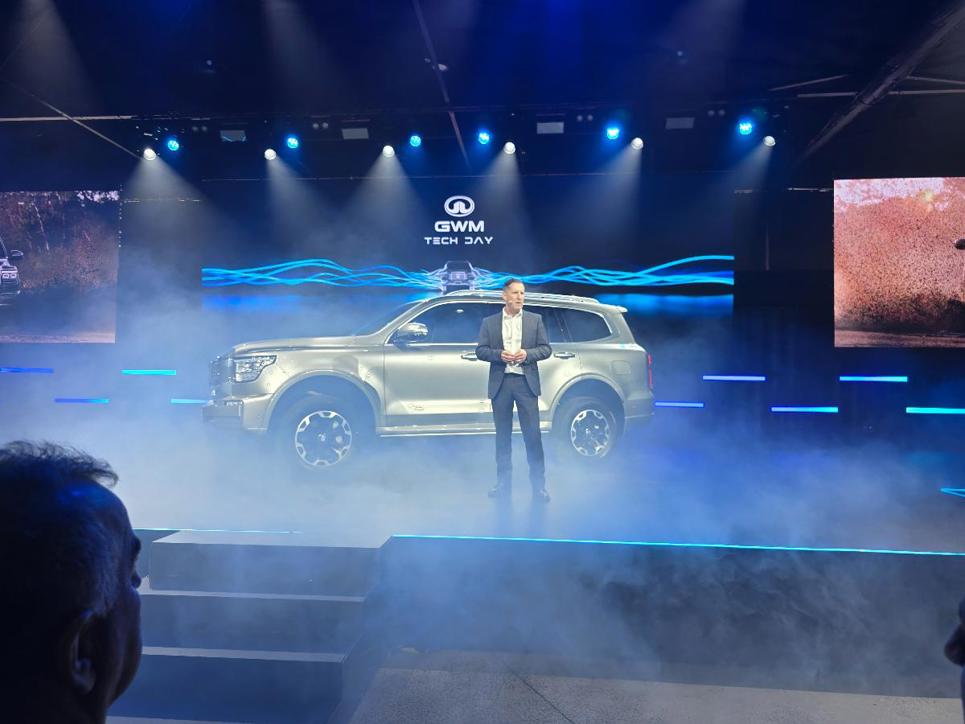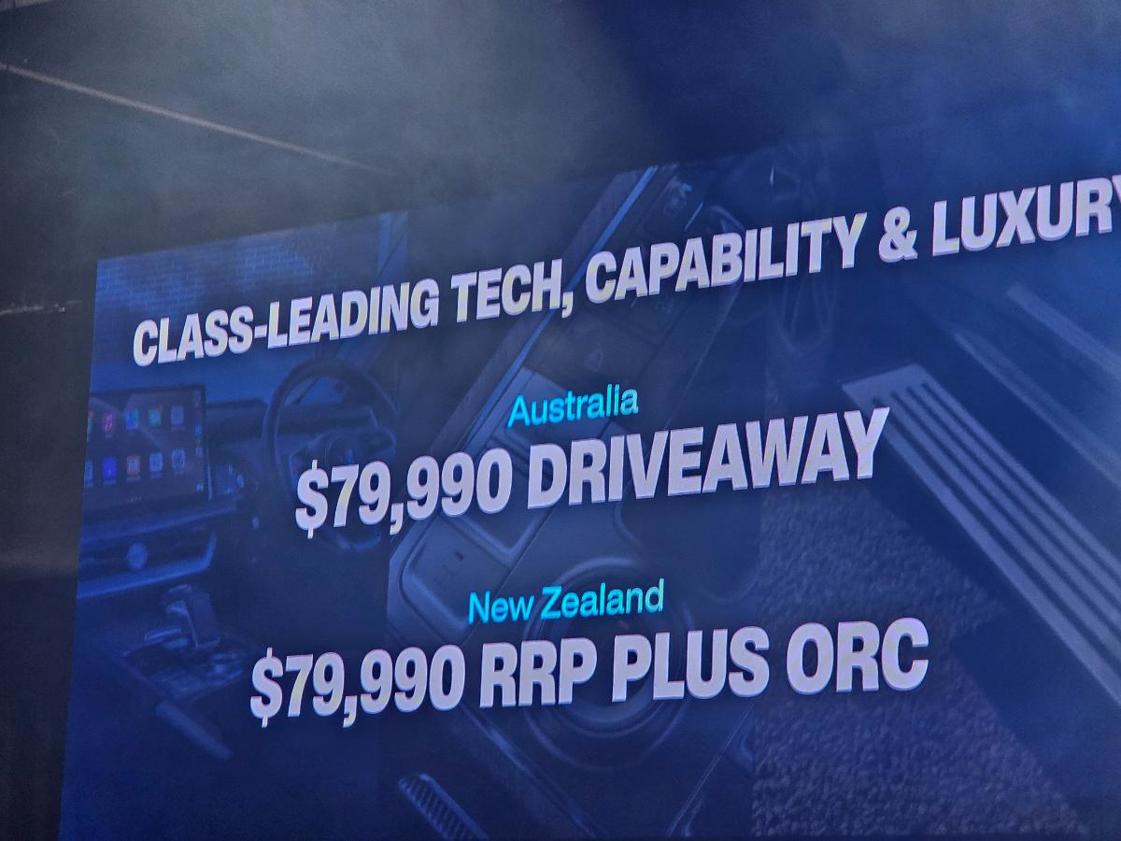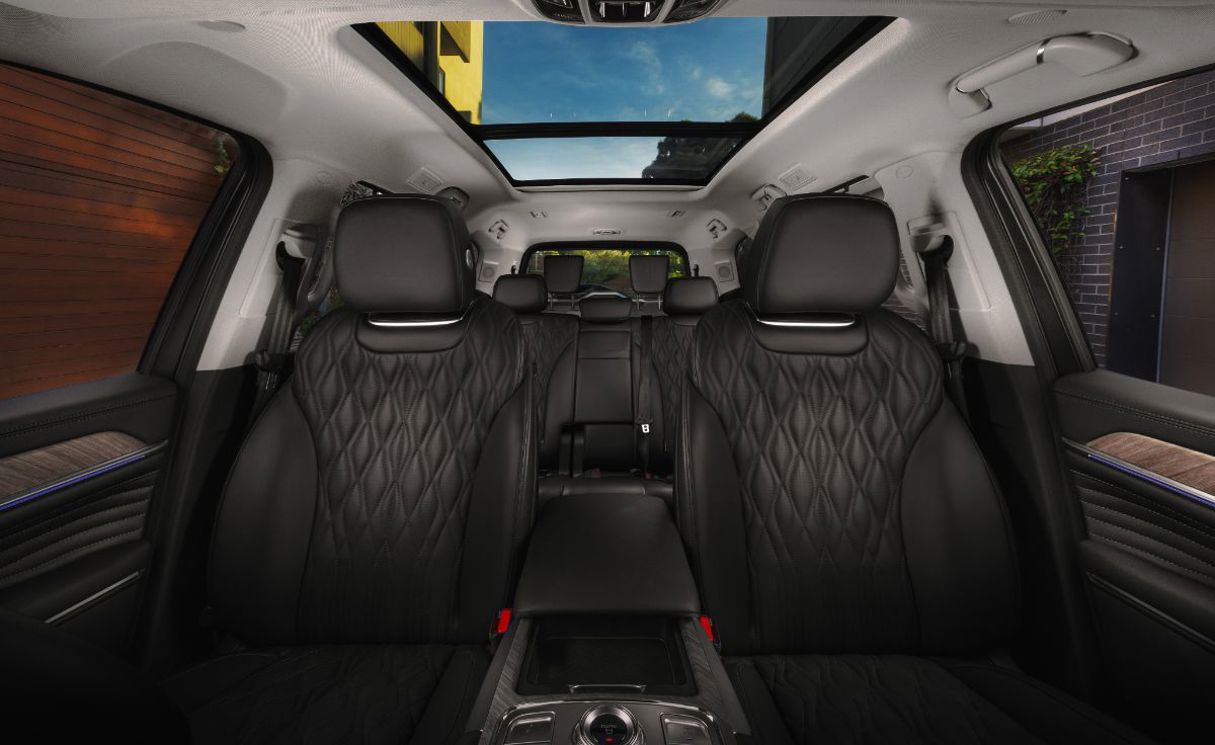- New PHEV flagship for GWM's Tank 500 SUV range.
- Same powertrain as Cannon Alpha PHEV ute, same 3-tonne tow rating.
- Five-seat cabin, compared to 7 for the Tank 500 HEV.
GWM has revealed more details and pricing for the new model variant joining its local line up; the Tank 500 Hi4-T PHEV.
The Tank 500 Hi4-T arrives as a flagship model engineered to deliver a "class leading combination of luxury and off-road capability” according to head of marketing and communications for GWM Australia and New Zealand Steve Maciver.

The Hi4-T will top the Tank 500 range at $79,990 and will feature the same powertrain used in the related Cannon Alpha PHEV ute, namely a 180kW/380Nm 2.0-litre turbo four-cylinder petrol engine paired with a 37.1kWh ternary lithium battery and a 120kW electric motor producing a combined total power output of 300kW and 750Nm.
Maciver said that the 500 Hi4-T will sprint to 100km/h in 6.9 seconds, while also retaining the Cannon Alpha’s 3000kg towing capacity. It will however lose two seats, with the PHEV only being available as a five-seater, compared to the 500 HEV’s seven-seat configuration.

Beyond its power, GWM says the Tank 500 Hi4-T delivers exceptional efficiency and electric-only capability, thanks to its sophisticated hybrid architecture.
With a pure EV range of up to 120km and a combined range of up to 950km, the 500Hi4-T will return 2.1l/100km when fully charged, or 8.4l/100km when used solely as a hybrid. By way of comparison the existing Tank 500 HEV returns a claimed 8.5l/100km.
It should be noted that all these figures are recorded under the NEDC test cycle, which is less accurate (and more generous) than the WLTP test cycle commonly quoted in New Zealand.

GWM says the Hi4-T system “smartly manages power to maximise performance and efficiency’, crucially retaining 90 percent of its performance even when the battery charge is low. This stands in stark contrast to competitor hybrid systems, which can lose nearly 40 percent of their performance under similar conditions.
The Tank 500 Hi4-T maintains the standard hybrid model's 800mm wading depth, thanks to a cleverly positioned and IP67 waterproofed battery pack. All original approach, breakover, and departure angles are also retained, and it remains equipped with front, center, and rear locking differentials.
Further enhancing its utility, the Tank 500 offers flexible charging and power-out options. It supports DC fast charging, capable of replenishing the battery from 30 percent to 80 percent in just 24 minutes, while standard AC charging can take it from 2 percent to 100 percent in 6.5 hours. A standout feature is its 6kW Vehicle-to-Load (V2L) function, which can power external devices, making it an ideal partner for "exploring off the grid or powering tools" at a worksite.

Inside, the cabin retains the luxury touches of the HEV and features a big 14.6-inch infotainment screen, an Infiniti premium audio system, and Nappa leather accented seats. GWM has also extended the heating, cooling, and massaging functions of the front seats to the second row in what it says is a segment-first feature typically reserved for flagship luxury sedans.
The company says the launch of more plug-in hybrids is not just a product update; it's a calculated strategic move. With Australian government emissions standards (NVAS and CCS) set to reshape the automotive landscape, GWM executives noted that it's how brands react that will be key to future consumer buying decisions. By introducing its fourth PHEV model, GWM says it is demonstrating a proactive and highly visible reaction to these changes.
The company says this is a forward-thinking strategy that underscores its confidence, with Maciver saying that GWM is "well positioned not just to cope with but to thrive in this new era."









